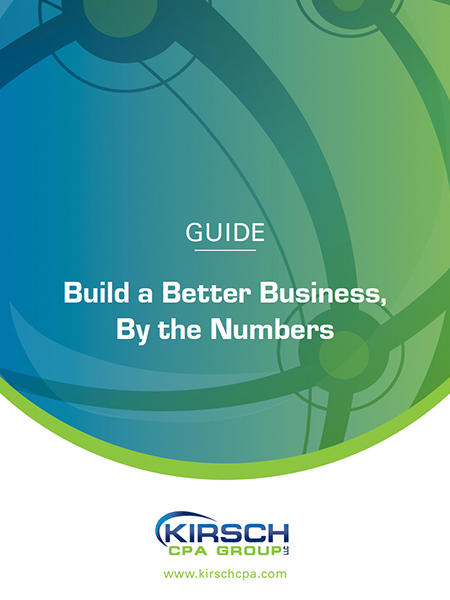What Your Numbers Are Saying: Are You Listening?
Part 2: How Attractive Is Your Balance Sheet?
Kirsch CPA Group
Jul 19, 2021

Most business owners take time each month to review the balance sheet. But are you using your balance sheet to make decisions for your business? What truly makes for a strong balance sheet? (hint: it’s more than just cash on hand).
Your balance sheet represents how you’re doing as a company. When you need to borrow money or want to sell your company, your balance sheet represents an accurate picture of the financial health of what you own. It will also identify your company’s working capital, net equity, and debt levels. Determining the right levels will help you identify If you’re taking out too much cash, over-leveraged with debt, and other steps you need to take to stay in front of a potential problem or improve your business valuation.
What does your balance sheet say about your company? It comes down to three primary metrics.
Working Capital
Do you know how much working capital you need to run your business?
Working capital is generally defined as your current assets (including cash) minus your current liabilities. While the working capital requirement of each business is different, the general rule of thumb is to always have at least three months of operating expenses in your company’s bank account to cover payroll, rent and other expenses. If you have more, you can distribute it to shareholders or reinvest it into your company – otherwise, the money is considered “idle” and not working for the company or shareholders.
Simply put, if your operating expenses are $250,000 per month, your targeted working capital is at least $750,000.
Net Equity
Net equity for your company is the net investment or book value of your business and is defined as total assets minus total liabilities.
Is your company’s net equity positive? Has it been growing or at least trending upward in recent years? How about over the long-term?
If yes, you’re probably in a good position – unless this falls short of industry peers. Do you know the company equity of others in your industry? We can help provide comparisons.
If net equity is negative, it’s a red flag for you, your bank and other outside parties. It may be a short-term situation or a sign of the company’s potential failure.
Debt Level
In addition to how much debt you owe, your debt-to-equity ratio can be revealing.
From our experience, here are some debt-to-equity ratios and their level of risk:
- 2 or greater is very risky
- 1-2 is somewhat risky
- 0-1 is less risky
- <1 could mean insolvency
Balance Sheet Client Examples
Timing is key. Our client had little cash on hand. We helped them navigate tight cash flow with immediate action to weather the storm in the short-term and ensure they could reap the benefits of a strong sales pipeline.
Use “idle” cash to incentivize employees. Delayed and inaccurate financials were causing our client to retain millions of dollars in idle cash as a safety net. With accurate financials, the business owner was empowered to make the right decisions for using millions of dollars in cash on hand with distributions to shareholders and investing to retain key employees.
Upon review of a client’s balance sheet in the healthcare space, it was determined that they had more than sufficient working capital to meet the short-term downturn in their business, which provided the owner much needed peace of mind to go back to aggressively running the business for long-term growth.
Get Started Today
Whatever your circumstances, Kirsch CPA has been there to provide clients with the numbers and insights they need to position themselves for profitability and growth.
If you would like a deeper understanding of the strength of your balance sheet and what it’s telling you, let’s talk. Understanding your working capital, net equity and debt level is key, but there’s more to consider for a complete picture of your financial health. Get started by taking advantage of our complimentary Balance Sheet Review that will examine your reporting and make suggestions.
Contact us to learn more about our accounting advisory and CFO services
Related blog:
What Your Numbers Are Saying: Are You Listening?
Part 1: Do You Know Your Profitability?
More Resources

About The Author
Kirsch CPA Group is a full service CPA and business advisory firm helping businesses and organizations with accounting,…





